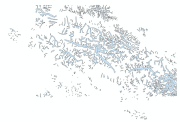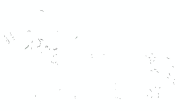Cryosphere
Type of resources
Available actions
Topics
Keywords
Contact for the resource
Provided by
Years
Representation types
Update frequencies
status
Scale
-
The data contains improved daily MODIS Terra/Aqua combined snow-cover merged with Randolph Glacier Inventory (RGI6.0) product. This product is generated using MODIS Terra and Aqua daily snow cover products MOD10A1 and MYD10A1 collection 6 (C6), respectively. The data covers High Mountain Asia (HMA) covering latitude 24.32− 49.19 N and Longitude 58.22 - 122.48 E with temporal coverage between 2002 and 2019. The data has daily temporal resolution and 500 m spatial resolution. The product is named as M*D10A1GL06 derived from MODIS Terra (MOD) MODIS Aqua (MYD), original product number (10A1) and Glacier (GL), Version 6 (06). The product is described in ordinal date available in GeoTIFF file format as described in the associated Dataset README. For more details about the data, please read the paper associated with this data titled "An improved Terra-Aqua MODIS daily cloud-free snow and Randolph Glacier Inventory 6.0 combined product (M*D10A1GL06) for high-mountain Asia between 2002 and 2019" in Earth System Science Data Journal.
-

Digital polygon data of Glaciers of Central Karakoram National Park(CKNP) area, Pakistan. This dataset is created using topographic sheet maps at scale of 20000.
-

Digital polygon dataset of Snow cover area of Central Karakoram National Park (CKNP) area, Pakistan. This dataset is created using topographic sheet maps at scale of 20000 and verified using satellite image.
-

Digital polygon dataset of Glacier exposed rocks of Central Karakoram National Park (CKNP) area, Pakistan. This dataset is created using topographic sheet maps at scale of 20000.
-
The dataset shows a layer of rock glaciers mapped comprehensively by a first person, using the polygon tool in Google Earth. Therefore, 4000 randomly distributed sample polygons have been created over the Hindu Kush Himalayan region, and each sample polygon has been examined for rock glaciers by two different individuals to increase confidence in the mapping.
-
Digital polygon data of Glaciers of Bhutan in 1980, 1990, 2000 and 2010. This dataset is created using Landsat MSS, TM and ETM+ imageries of respective years. The glacier outlines was derived semi-automatically using object-based image classification (OBIC ) method separately for clean ice and debris cover and further editing and validation was done carefully by draping over the high resolution images from Google Earth.
-
The dataset shows a layer of rock glaciers mapped comprehensively by a second person, using the polygon tool in Google Earth. Therefore, 4000 randomly distributed sample polygons have been created over the Hindu Kush Himalayan region, and each sample polygon has been examined for rock glaciers by two different individuals to increase confidence in the mapping.
-
The data contains an enhanced MODIS 8-day Terra (MOD10A2) and Aqua (MYD10A2) collection 6 snow-cover composite product merged with Randolph Glacier Inventory (RGI6.0). The data is specifically developed for the High Mountain Asia (HMA) with the geographic coverage between latitude 24.32 − 49.19 N and Longitude 58.22 − 122.48 E. The data is available with eight-day temporal resolution and 500 m spatial resolution covering the period between 2002 and 2018. The name of the product is derived from MODIS Terra (MOD) MODIS Aqua (MYD), and Glacier (GL), Version 6 (06) as MOYDGL06*. The product is described in Julian day and each year has 46 eight-day composite images in GeoTIFF file format as described in the associated readme.TXT. The data can be accessed alternatively from https://doi.org/10.1594/PANGAEA.901821. The R code developed for this product is available at https://doi.org/10.5281/zenodo.3610735. For more details about the data, please read the paper associated with this data titled lease read the paper associated with this data titled "An improved Terra/Aqua MODIS snow-cover and RGI6.0 glacier combined product (MOYDGL06*) for the High Mountain Asia between 2002 and 2018" published in Earth System Science Data Journal.
-
Of the 3,800 glaciers in Nepal, we have been systematically monitoring Yala Glacier in Langtang, and Rikha Samba Glacier in Mustang since 2011. Data collected from these glaciers are submitted to the World Glacier Monitoring Service. As one of the essential climate variables, glaciers help us better understand the climate system. Regular monitoring of glacier mass balance provides information about the water stored and released as ice melt within a given period. The HKH region has the largest ice repository outside of the polar regions and is the source of water for ten major rivers in Asia. The impact of climate change on glaciers has increased the risk of associated geohazards and is driving changes in downstream water availability in the region. The region is sensitive to climate change and has been witnessing rapid glacier melt, increased frequency and magnitude of extreme weather events, and a shift in monsoon patterns. Hence, there is a growing need for the HKH countries to improve their knowledge and understanding of these changes, and to determine the implications for the region’s water supply. In collaboration with our partners from Nepal and with support from the governments of Norway and Switzerland, we are implementing the project “Monitoring and assessment of changes in glaciers, snow and glacio-hydrology in the Hindu Kush Himalaya region.”
-
The product contains improved MODIS 8-day Terra (MOD10A2) and Aqua (MYD10A2) collection 6.1 snow-cover composite product merged with Randolph Glacier Inventory (RGI6.0). The product is generated using MODIS Terra and Aqua 8-day snow cover products MOD10A2 and MYD10A2 collection 6.1 (C61), respectively. The data covers High Mountain Asia (HMA) covering latitude 24.32 − 49.19 N and Longitude 58.22 − 122.48 E. The data is available with eight-day temporal resolution and 500 m spatial resolution covering the period between 2002 and 2022. The name of the product is derived from MODIS Terra (MOD) MODIS Aqua (MYD), and Glacier (GL), Version 6.1 (61) as M*D10A2V61GL. The product is described in ordinal date and each year has 46 eight-day composite images in GeoTIFF file format. The data is described by the values 25, 50, 198, 199, 200, 238, 239, 240, 242, 248, 249, 250, and 252. Following is the description of values in the improved combined snow product 25: No Snow classes 50: Cloud 198: Snow only in Terra 199: Snow only in Aqua 200: Snow in both Terra and Aqua 238: Debris-covered ice with Terra Snow 239: Debris-covered ice with Aqua Snow 240: Exposed debris-covered ice 242: Debris-covered ice with Snow in both Terra and Aqua 248: Debris-free ice with Terra Snow 249: Debris-free ice with Aqua Snow 250: Exposed debris-free ice 252: Debris-free ice with snow in both Terra and Aqua
 Metadata Catalogue
Metadata Catalogue